Foodservice Management: a Capstone Course and Program Assessment
 At The Culinary Institute of America, a final-semester project to plan and execute an event marketed to the public is one of the most rewarding parts of students’ educations.
At The Culinary Institute of America, a final-semester project to plan and execute an event marketed to the public is one of the most rewarding parts of students’ educations.
By Dr. Pat Bottiglieri
Foodservice Management is taught in the final semester of the senior year in the Bachelor of Professional Studies Program at The Culinary Institute of America (
In addition, the course includes a capstone project. The project requires students to plan and execute an event that is marketed to the general public. The events must generate a profit. And, as the

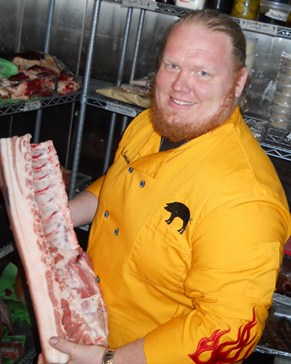 Dylan Lipe of Sweet Baby Ray’s Restaurants & Catering was born to barbecue.
Dylan Lipe of Sweet Baby Ray’s Restaurants & Catering was born to barbecue. Because the culinary and foodservice industries are very small, helping students learn how to establish personal relationships with their peers becomes part of our jobs.
Because the culinary and foodservice industries are very small, helping students learn how to establish personal relationships with their peers becomes part of our jobs.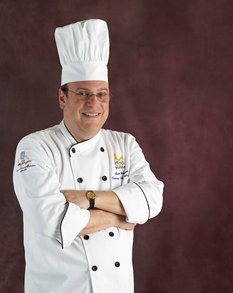 Students want to be assessed. It appeals to their emotions and egos. Find ways to assess them beyond merely awarding a letter grade.
Students want to be assessed. It appeals to their emotions and egos. Find ways to assess them beyond merely awarding a letter grade. McDonald’s celebrates innovations in energy savings, recycling and other environment-focused areas around the world.
McDonald’s celebrates innovations in energy savings, recycling and other environment-focused areas around the world.
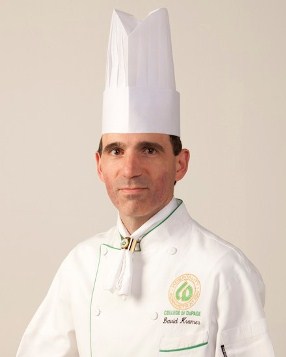 Chef David Kramer, associate professor of culinary arts at the College of DuPage in Glen Ellyn, Ill., is one of six chefs and foodservice professionals nationwide to win a 2012 United Fresh Produce Excellence in Foodservice Award. Nominated by Chicago-based Testa Produce, Inc., Kramer won in the Business in Industry & Colleges category. The awards program, created by the United Fresh Produce Association and sponsored by PRO*ACT, honors chefs and their companies for innovative and influential use of produce in the culinary arts.
Chef David Kramer, associate professor of culinary arts at the College of DuPage in Glen Ellyn, Ill., is one of six chefs and foodservice professionals nationwide to win a 2012 United Fresh Produce Excellence in Foodservice Award. Nominated by Chicago-based Testa Produce, Inc., Kramer won in the Business in Industry & Colleges category. The awards program, created by the United Fresh Produce Association and sponsored by PRO*ACT, honors chefs and their companies for innovative and influential use of produce in the culinary arts.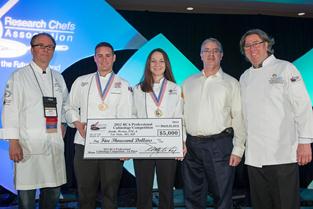 The team of Eric Stein, M.S., R.D., a chef-instructor at the Kendall College School of Culinary Arts, and Jaime Mestan, C.S.C., a Kendall College culinary alum (‘08) and research chef at Ed Miniat, Inc., in South Holland, Ill., took first place in the inaugural Professional Culinology® Competition, March 23 in San Antonio, Texas, held in conjunction with the Research Chefs Association’s (RCA) Annual Conference and Culinology® Expo.
The team of Eric Stein, M.S., R.D., a chef-instructor at the Kendall College School of Culinary Arts, and Jaime Mestan, C.S.C., a Kendall College culinary alum (‘08) and research chef at Ed Miniat, Inc., in South Holland, Ill., took first place in the inaugural Professional Culinology® Competition, March 23 in San Antonio, Texas, held in conjunction with the Research Chefs Association’s (RCA) Annual Conference and Culinology® Expo.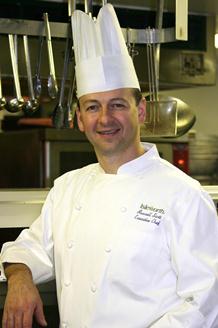 Russell Scott, one of only 66 Certified Master Chefs in the United States, has been named dean of education of The Culinary Institute of America (CIA) at Greystone, effective April 2, 2012. In his new role, Scott will be responsible for the quality and effectiveness of all education programs at the CIA campus in St. Helena, Calif. He will oversee faculty and staff on the education team, direct the development and delivery of the curriculum, and lead the support of students enrolled in the campus’ degree and certificate programs.
Russell Scott, one of only 66 Certified Master Chefs in the United States, has been named dean of education of The Culinary Institute of America (CIA) at Greystone, effective April 2, 2012. In his new role, Scott will be responsible for the quality and effectiveness of all education programs at the CIA campus in St. Helena, Calif. He will oversee faculty and staff on the education team, direct the development and delivery of the curriculum, and lead the support of students enrolled in the campus’ degree and certificate programs.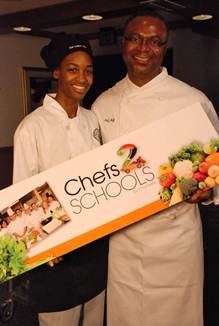 Culinary students at Warren Central High School, Indianapolis, Ind., cooked up a storm at the First Annual Junior Chef competition on March 6. Sponsored by Chartwells School Dining Services, the foodservice provider for MSD Warren Township, the students were honored to be supervised by Chef Cary Neff, vice president, Corporate Culinary Services, Morrison Management Specialists, which provides food, nutrition and dining services to the healthcare and senior-living industries.
Culinary students at Warren Central High School, Indianapolis, Ind., cooked up a storm at the First Annual Junior Chef competition on March 6. Sponsored by Chartwells School Dining Services, the foodservice provider for MSD Warren Township, the students were honored to be supervised by Chef Cary Neff, vice president, Corporate Culinary Services, Morrison Management Specialists, which provides food, nutrition and dining services to the healthcare and senior-living industries.